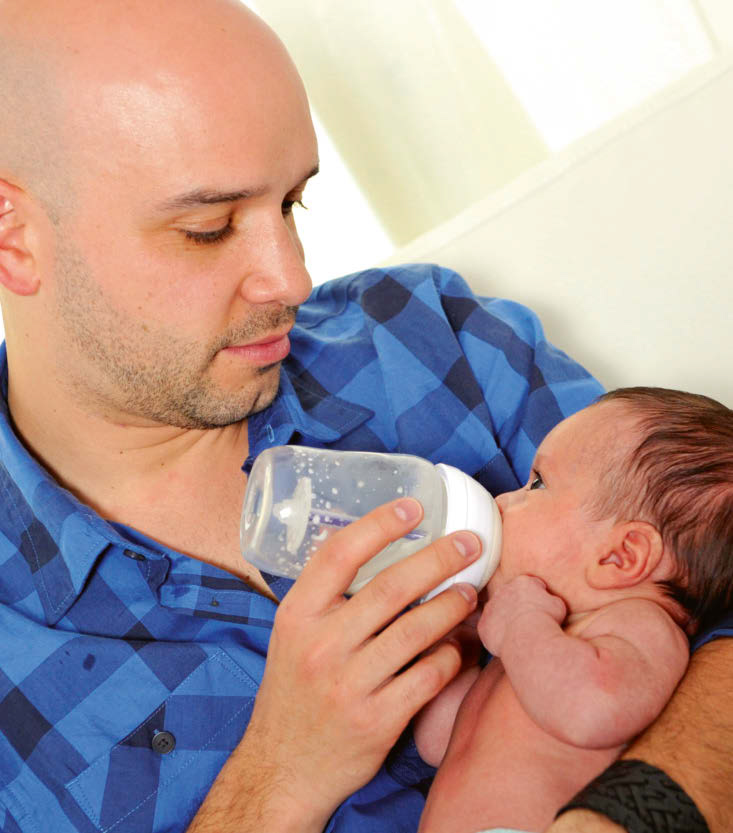As well as tending to the needs of pregnant women, pharmacists and their staff are often asked for advice on a wide range of problems that can affect infants.
Cradle cap
 Cradle cap (infantile seborrhoeic dermatitis) looks like dandruff and can affect areas of the body as disparate as the nappy area and skin folds as well as the scalp and nearby ears, neck and face. It usually resolves without treatment, although massaging a greasy product such as olive oil or emulsifying ointment into the affected site can loosen the brownish scales, making them easier to brush or rinse out. Refer severe or persistent cases, or if there looks to be an infection.
Cradle cap (infantile seborrhoeic dermatitis) looks like dandruff and can affect areas of the body as disparate as the nappy area and skin folds as well as the scalp and nearby ears, neck and face. It usually resolves without treatment, although massaging a greasy product such as olive oil or emulsifying ointment into the affected site can loosen the brownish scales, making them easier to brush or rinse out. Refer severe or persistent cases, or if there looks to be an infection.
Colic
 Like cradle cap, colic often begins within the first few weeks of life, and is characterised by intense crying that commonly occurs in the late afternoon or evening and may last several hours. Despite their apparent distress, babies are not harmed by colic and usually continue to feed and gain weight as normal. The cause of colic is not known, which makes management a question of trial and error.
Like cradle cap, colic often begins within the first few weeks of life, and is characterised by intense crying that commonly occurs in the late afternoon or evening and may last several hours. Despite their apparent distress, babies are not harmed by colic and usually continue to feed and gain weight as normal. The cause of colic is not known, which makes management a question of trial and error.
Actions that may help include holding or rocking the baby, putting the infant in a warm bath, gently massaging the tummy, and sitting the child upright when feeding to prevent excess air being swallowed. Refer any babies that seem unwell with the colic or if the parents seem to be struggling excessively, as the condition can trigger or exacerbate post-natal depression and anxiety.
Nappy rash
 Nappy rash is better prevented than cured, by changing nappies frequently and applying a barrier product after cleaning the area. Unlike cradle cap, it is rare in newborns. Refer any infants that seem distressed as a result of the condition, or if there are signs of fungal or bacterial infection; the former usually has a sharply defined outline, whereas the latter is more likely to be exuding.
Nappy rash is better prevented than cured, by changing nappies frequently and applying a barrier product after cleaning the area. Unlike cradle cap, it is rare in newborns. Refer any infants that seem distressed as a result of the condition, or if there are signs of fungal or bacterial infection; the former usually has a sharply defined outline, whereas the latter is more likely to be exuding.
Possetting
Bringing up a small amount of milk during or just after a feed is very common and usually the result of the oesophagus not being fully developed. As the baby matures, the lower oesophageal sphincter muscle strengthens and the problem usually resolves.
Before this happens, steps that can be taken to reduce the reflux include avoiding overfeeding by feeding little and often, burping the baby regularly during feeds and holding them upright for a short while afterwards, and making sure the right size teat is being used if bottle feeding. Refer any babies that may have gastro-oesophageal reflux disease, usually characterised by frequent projectile vomiting, or who are not gaining weight as expected.
Fever
Fever is common during infancy, either as a reaction to routine vaccinations or in response to an infection. Rather than relying on touch, parents and carers should use a thermometer to gauge a baby's temperature, ideally using a digital model under the armpit.
Ear thermometers are sometimes considered more accurate but can be difficult to place correctly and may be misleading. Forehead strip thermometers are not accurate so should be avoided, as should any mercury-containing models.
